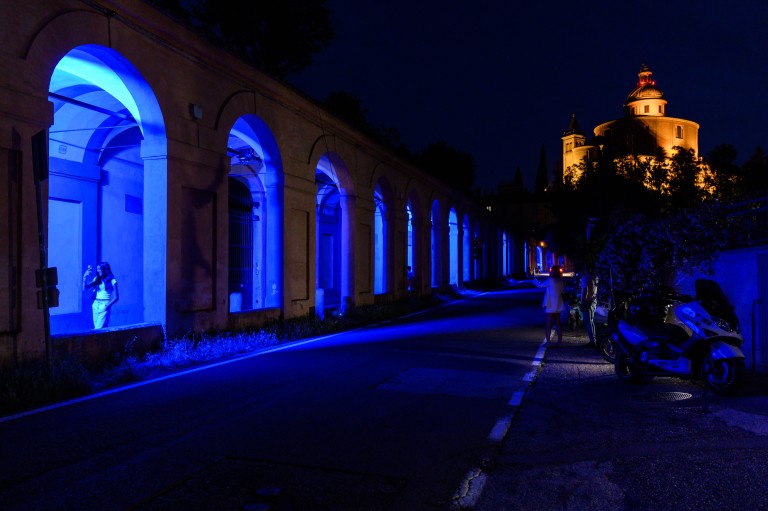Piazza della Pace and Monumental Cemetery of the Certosa
Piazza della Pace, with events dedicated to Filuzzi's dance and tradition, the Bolognese plain and the Certosa Monumental Cemetery, one of the most suggestive places in the city that becomes a site-specific performance theater
Piazza della Pace overlooks the stretch of porch of Via De Coubertin which, flanking the Renato Dall'Ara stadium, leads on one side to the Arco del Meloncello, the beginning of the climb to the sanctuary of the Blessed Virgin of San Luca, and on the other to the Monumental Cemetery of the Certosa, among the largest and oldest in Europe and among those of greatest historical and artistic value at national level. Founded in 1801, the cemetery covers an area of about 30 hectares starting from the structures of a former Carthusian convent of which, as evidence, remains the church of San Girolamo, a treasure chest of seventeenth-century Bolognese painting.
Between porches, loggias and rooms, the Certosa is configured as a real city in the city of the living, between the largest repertoire of Neoclassical sculpture in Italy and some of the best examples of local liberty, in a very large open-air museum.
Among the illustrious people who rest at the Certosa Guglielmo Marconi, Giorgio Morandi, the Nobel Prize winner Giosuè Carducci and the writer Riccardo Bacchelli, the opera singer Carlo Broschi known as Farinelli, the composer Ottorino Respighi, the president of the Bologna Football Club Renato Dall'Ara and Lucio Dalla.
In the year 2021, the Monumental Cemetery of the Certosa di Bologna was declared a UNESCO World Heritage Site. An indispensable destination even during the 19th century, the Certosa was admired live by Lord Byron, Charles Dickens and Sigmund Freud.













